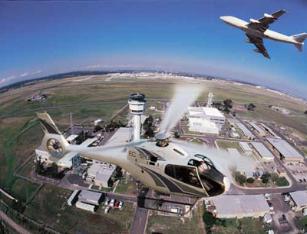OPTIMAL: New Rotorcraft Procedures
The University of Liverpool is working within the OPTIMAL work package that is developing new rotorcraft procedures, paying special attention to the context of airports allowing Simultaneous Non Interfering (SNI), IFR (Instrument Flight Rules) rotorcraft operations.
|
|
|
SNI operations will involve the close proximity of rotorcraft and |
The new SNI procedures for rotorcraft are aimed at incorporating steep and/or curved and segmented trajectories. The benefit of these is the smaller noise footprints resulting from the higher altitudes of flights over population zones adjacent to airports and also the lower noise emissions of rotorcraft in steep approaches (greater than 6°). Important for the development of future SNI operations are the safety issues associated with interactions between rotorcraft and fixed-wing wake vortices in these new scenarios. It is well known that these vortices are a potential risk to conventional fixed-wing traffic but what are the risks to rotorcraft? Longitudinal separation rules have been in place for conventional traffic on the same approach path for many years but very little is defined for simultaneous, laterally separated rotorcraft operations?
The University of Liverpool is contributing to the project by building upon past research in the modelling and simulation of rotorcraft vortex wake encounters. It is developing methods that will eventually allow for the definition of the safety boundaries in terms of where rotorcraft SNI operations can take place and for defining the flight envelopes for different rotorcraft types. The important factors for such a study will include the wind speed and direction, the vortex generating aircraft (e.g., Airbus 310, Boeing 737), the encountering rotorcraft type and the rotorcraft’s trajectory (approach, hover, take-off).
